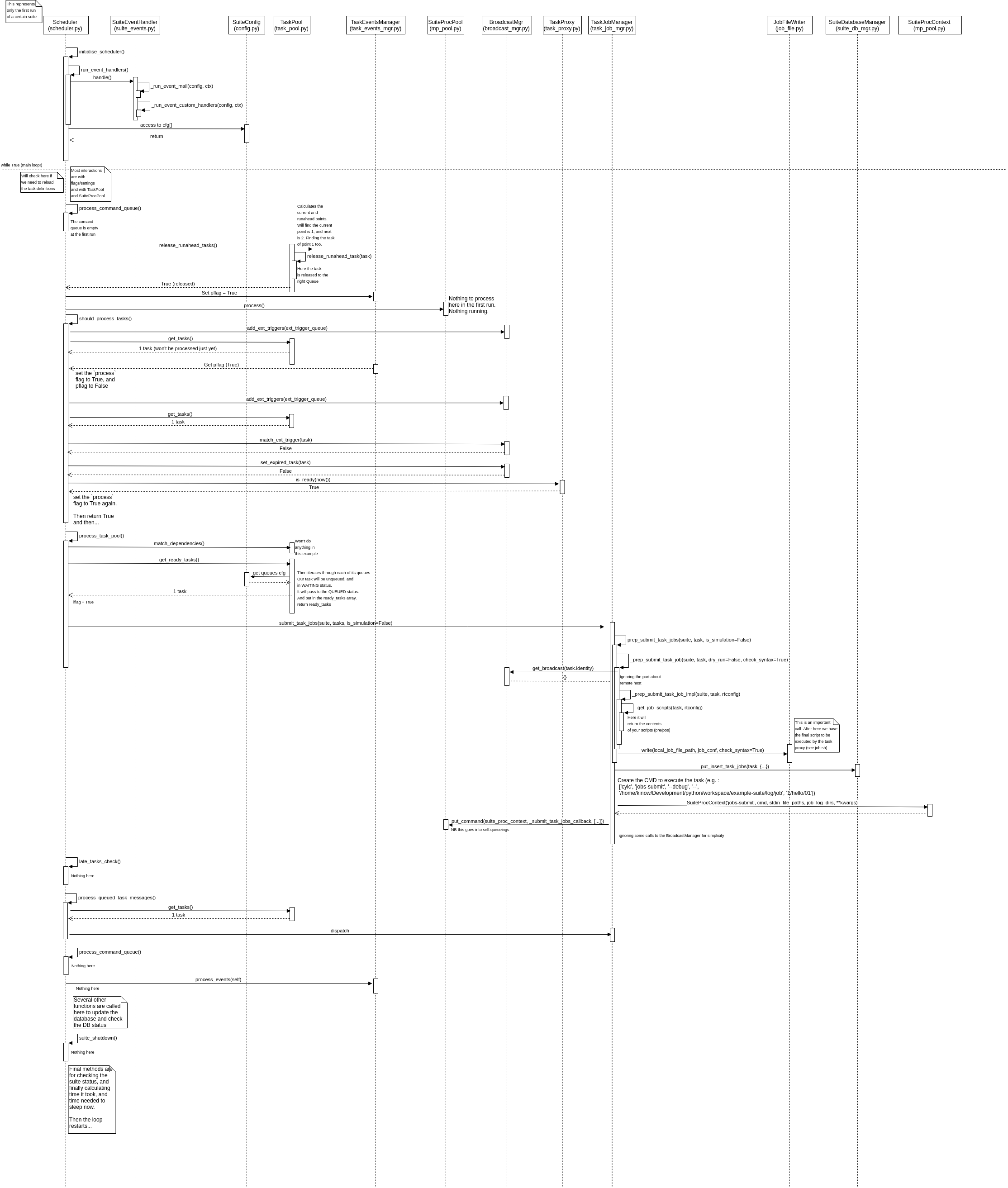Cylc Scheduler Internals - Part 3
This is the part 3, in a series of posts about Cylc
internals. The [part 1]({% post_url 2018-07-14-cylc-scheduler-internals-part-1 %})
had the beginning of the workflow. [part 2]({% post_url 2018-07-27-cylc-scheduler-internals-part-2 %})
documented from the moment the method configure() is called. This post will
continue right after the continue() method returns, going on with the next method: run().
At this point, the Suite Server program must have been initialized, with the objects that it requires, and with everything configured. So this method is the one that starts the whole work on the tasks & proxies.
The runahead points, i.e. what are the next available cycle points, are calculated and scheduled. In the scheduling, tasks are queued for execution.
Most of the interesting action takes place when process_task_pool() is called,
and in the submit_task_jobs(). The latter is a method from TaskJobManager, and
it is here where - in this case - my shell command is executed through a temporary
shell script file.
The graph was created from the initial execution of a suite that was starting from scratch (they can also be reinitialized). If there are multiple tasks waiting, or if a suite was restarted, the diagram would look considerably different.
You can download the <a href="/assets/posts{{page.path | remove: “.md” | remove: “_posts” }}/cylc-scheduler_run-src.xml">source file for the diagram used in this post, and edit it with draw.io.
Categories: Blog
Tags: Cylc, Python, Opensource, Workflows, Programming
